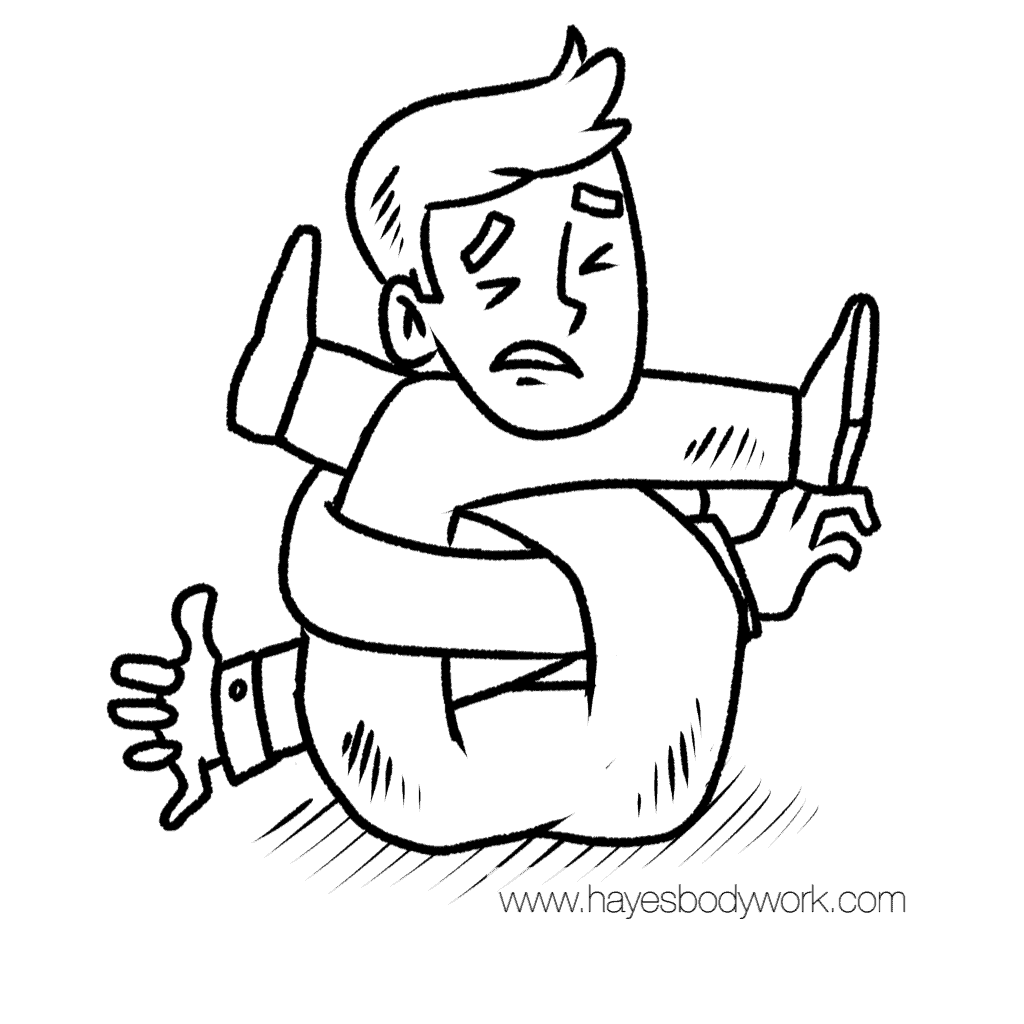What Are Knots?
A knot, otherwise known as a trigger point or a myofascial trigger point, is a sensitive spot in muscle tissue that makes certain movements irritating or annoying.
Try not to think of a knot as a “knot” in the traditional sense. They are not muscles wrapping around each other to form a knot. Instead, think of a knot as a muscle spasm.
Anyone – from athletes to couch potatoes – can get knots in their muscles, so it’s important to know how these knots form and how massage therapy can relieve them. The more you know about knots, the better you’ll be able recognize, treat and prevent them in the future.
Why Do Knots Form?
Most of the time our muscles are either working or relaxing, contracting (shortening) or elongating (lengthening). When muscles continue to work or relax beyond their capacity, they become tired and weak. This can happen when shoveling out after a heavy snow fall, playing an intense game of soccer or working at a desk for multiple hours at a time.
Essentially, knots form in a similar way that spasms do. When sections within the muscle constrict, pull from both ends, but don’t easily release, a knot will form, causing discomfort, pain or limiting one’s range of motion. Such cases require assistance through tools or manual manipulations to help relax and lengthen the knots.
Although knots feel exactly like the word suggest – a hard, coarse ball – they are not. Knots can:
- Be of various sizes
- Happen anywhere in the body
- Be in multiple places at once
- Cause pain or not hurt at all
You get my point. Knots essentially can form wherever you have muscle tissue and cause much irritation or discomfort if not treated.
How to Relieve Knots
Knots can be alleviated through a number of massage modalities. The common ones are myofascial release and trigger point therapy. Each of these modalities directly aid in the reduction of knots by using a massage technique called sustained compression.
Sustained compression means gradually applying deep pressure directly to the knot for 10-120 seconds at a time depending on many factors, including:
- Age of knot
- Feel of knot
- Location of knot
- The level of pain
- The sensitivity
- The person’s level of pain tolerance
Untying the knot doesn’t end there. If the knot is near a joint, then that joint also needs to be addressed. If the knot is causing pain, then the location of the pain needs to also be worked on. If that knot is preventing movement, then the therapist needs to also focus on that movement and the muscles that create that movement too.
If you want to knock out knots early, it’s best to get them worked out right away. This will stop a cycle of repetitive knots forming or not going away immediately. Also they are easier to address right away, whereas the longer you wait, the more time it will take to reverse the effects of knots on the body and performance, but that’s a topic for another blog post.
In Conclusion
If you are a person who is prone to knotting up. It’s best to stretch regularly, incorporate a foam roll or orb ball into your daily life, drink lots of water to keep your muscles hydrated and pliable and get lots of rest. Check in with your body regularly with a massage to recharge it and your mind.
I always hear my clients say “I should’ve started with this, why haven’t I done this before, this would’ve saved me a lot of time, I could have prevented so many injuries.” Massage is no longer a luxury. It’s a necessity because we ask a lot of our bodies, and our bodies need maintenance to uphold our demands.


Good blog Felicia! Nobody needs those pesky knots ! They are an inconvenience in our lives. If people would just get regular massage therapy sessions they can prevent knots for sure ! 😁
Good Blog Thanks For Shearing With us..